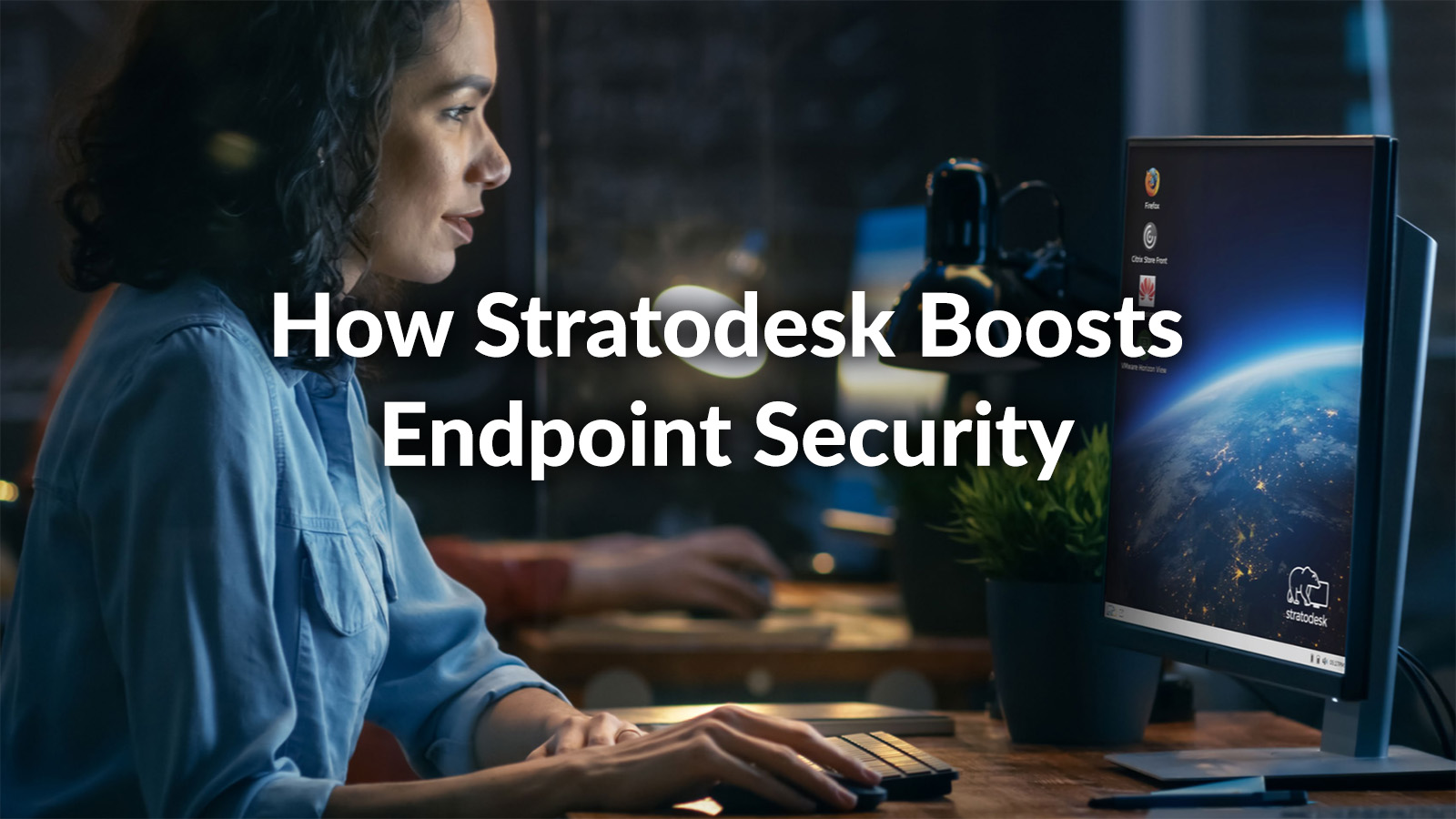A new white paper explores the many benefits of Stratodesk software for VDI endpoint security
Security is one of the chief concerns facing VDI deployments. In fact, it could be argued that security is the chief reason for virtual desktop infrastructure. It acts as a safety precaution against exploits that target endpoint devices, against natural disasters, theft, and beyond. Additionally, VDI allows IT to manage thousands of devices from one central location. Furthermore, with VDI, no data is stored on the endpoint itself, and yet, end users get the advantage of a full computing environment.
Still, servers, new hardware, IT overhead, Windows licenses and malware/antivirus contracts easily add up to a fortune. IT must deal with the massive demands placed on its own staff resources. In fact, it is estimated that organizations spend upwards of 1,000 hours a week on average updating, maintaining and patching their endpoints alone. Unfortunately, given how busy IT system administrators are today, it is far too difficult for them to manage the VDI endpoint security of each of their devices without the right solution in place.
Deploying an Effective and Secure VDI
In order to enable an effective and secure VDI deployment, enterprises and organizations must educate themselves on the many options, challenges, and benefits of securely scaling their network of devices, as well as the alternatives available to reduce IT staff hours and overall costs.
IT leaders who already know the benefit of VDI may see the need to scale their existing environment, but are hesitant to begin the process because of budget restrictions. And they are right in being wary of a complete overhaul of their existing hardware. High performing endpoints can cost a fortune. Amidst the horizon of rapidly growing demands on time and budget, organizations must find a better way to manage and scale their environments, while at the same time cut back strain on staff who are left with more work than they can achieve alone.
With VDI, any given organization’s productivity depends greatly on how well system administrators are able to effectively manage their entire network of mixed endpoint devices, and deliver virtual desktops, applications and necessary information to their end users in a convenient and expedient way. For this reason, organizations cannot afford to overlook this important aspect of their business. Endpoint management can, for better or for worse, have a disproportionate impact on the overall well being of day-to-day operations.
This paper seeks to explore effective strategies for enterprises and organizations looking to implement or expand their VDI while cutting costs and increasing security and performance. Also discussed is how NoTouch Desktop can proactively help organizations achieve their goals and better manage their complicated mixed environments of x86 and ARM based devices regardless of make, model or manufacturer.
Summary of Challenges Facing VDI Endpoint Security
IT system admins face several obstacles as they struggle to find a balanced approach to endpoint management while also growing the number of seats in their network. Their first obstacle to overcome is the Windows issue. In order to allow for VDI, IT must run Windows installations on each of their endpoint devices. This means extra hours must be spent maintaining these devices. Not to mention IT must also provide antivirus and malware protection for each and every endpoint device. To make things worse, different devices house different versions of Windows, which creates even more complexity.
VDI Endpoint Security Concerns
Along with the Windows problem is the matter of security. As previously mentioned, security is a key concern for VDI deployments – system admins must not only increase and maintain a high security standard while also decreasing login times, they must enable hardened security standards for the safety of confidential data and information. At the same time, they must allow staff to access all of the apps and data they need from any device, wherever they are. This causes great concern for IT managers who now have an equally high demand put not only on budget and security but also on ensuring convenience and flexibility at the same time.
In the case of an endpoint device being lost or stolen, how can IT leaders be assured that no confidential information is then accessible from the endpoint device? What about potential “evil maid” attacks? In reality, too many attack vectors exist that target the endpoint devices themselves.
Ensuring Reliability
Reliability is the third great challenge and cannot be stressed enough. Without an endpoint solution in place that is hassle free and one that offers a seamless user experience, workers cannot function at peak performance. If there is any hassle at all on the end user, you can quickly lose the benefit of VDI as IT resources are redirected towards aiding and assisting employees.
And, finally, many enterprises and organizations of all sizes and across multiple industries are facing a growing problem: the trend of faculty and staff bringing personal devices into the office, or using their personal devices to work from home. Employees want and expect to perform integral tasks on personal devices, either at home, in the office, or on the go. But how can this be done without opening up your network to the possibility of a security exploit?
Organizations have virtually zero control over endpoint devices themselves. If they are compromised, lost or stolen, these devices can pose a significant threat to your corporate network if the proper solution is not put in place.
Learn how Stratodesk solves these obstacles and more by downloading our latest white paper.

